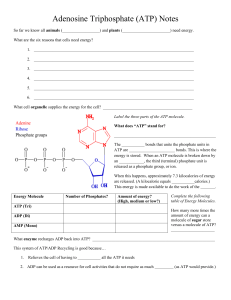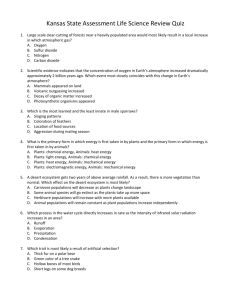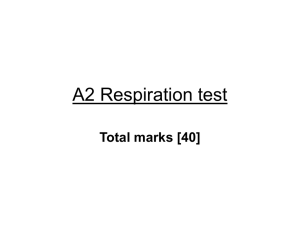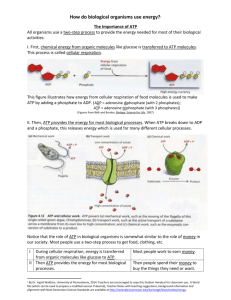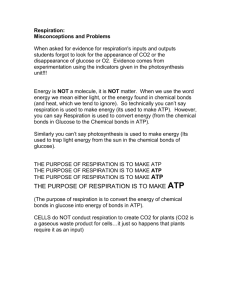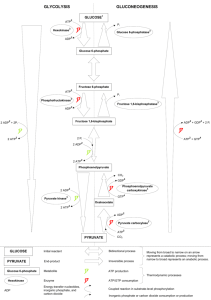Unit 1 – Cell Biology
advertisement
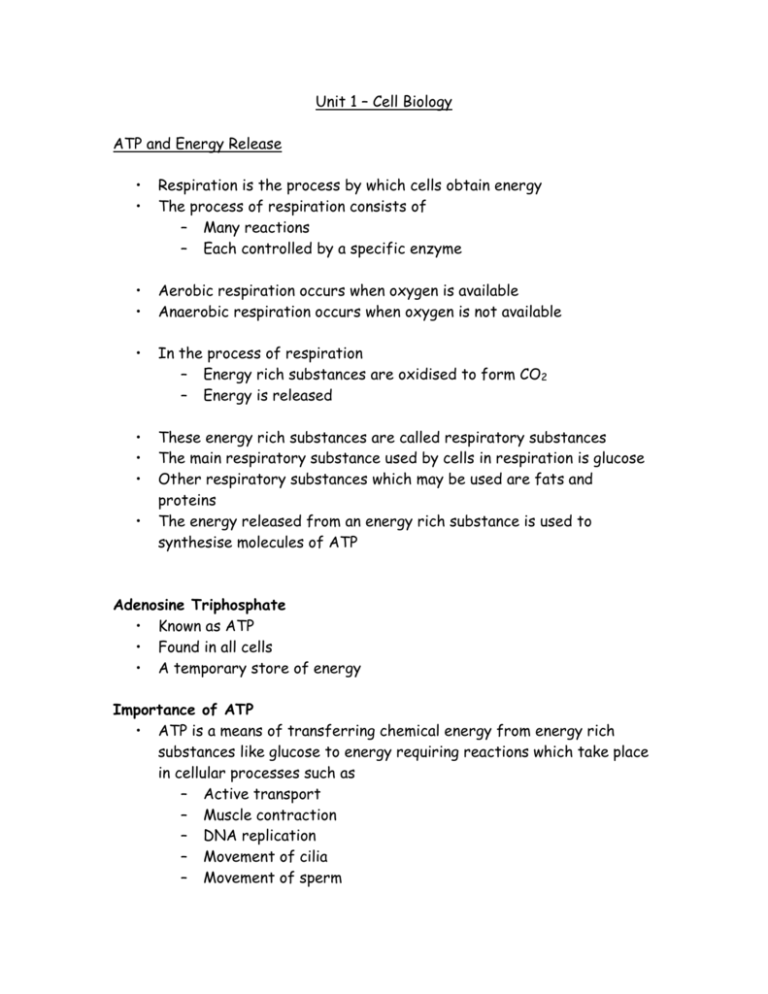
Unit 1 – Cell Biology ATP and Energy Release • • Respiration is the process by which cells obtain energy The process of respiration consists of – Many reactions – Each controlled by a specific enzyme • • Aerobic respiration occurs when oxygen is available Anaerobic respiration occurs when oxygen is not available • In the process of respiration – Energy rich substances are oxidised to form CO2 – Energy is released • • • These energy rich substances are called respiratory substances The main respiratory substance used by cells in respiration is glucose Other respiratory substances which may be used are fats and proteins The energy released from an energy rich substance is used to synthesise molecules of ATP • Adenosine Triphosphate • Known as ATP • Found in all cells • A temporary store of energy Importance of ATP • ATP is a means of transferring chemical energy from energy rich substances like glucose to energy requiring reactions which take place in cellular processes such as – Active transport – Muscle contraction – DNA replication – Movement of cilia – Movement of sperm Structure of ATP Breakdown of ATP • When the bond attaching the last phosphate group is broken – Energy is released – ADP and inorganic phosphate are produced i.e. ATP ADP + Pi + Energy Regeneration of ATP • When a phosphate is added to ADP – Energy is required – ATP is formed i.e. ADP + Pi + energy ATP




